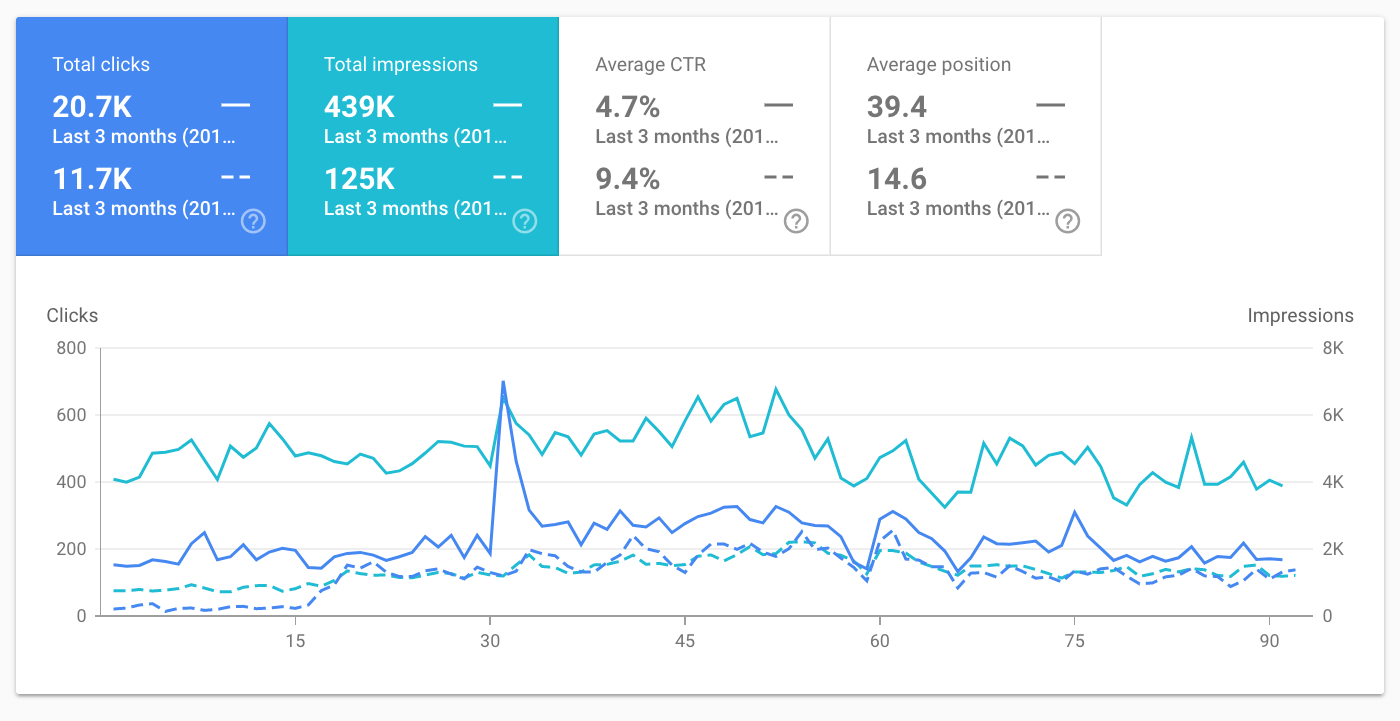Forecasting is crucial for any startup, and even more so for e-commerce startups. However, as inbound marketing strategies like SEO have become more important than ever, it has become increasingly difficult for companies to forecast with accuracy.
Sixty one percent of companies listed growing their organic SEO presence as their most important inbound marketing priority in Hubspot’s State of Inbound 2017 report, yet 40 percent named proving the ROI of marketing activities as their top marketing challenge.
Coincidence? I think not.
Forecasting the impact of SEO efforts has notoriously involved the speculative practice of measuring page ranking improvements, and then guessing how those improvements would impact ROI. As there is no one lever to adjust that can improve rankings, this type of forecasting has often led to futile efforts which provide zero concrete, actionable insights. And the truth is, while page rankings are important, they are not the only drivers of revenue; and they surely aren’t the easiest to measure.
To truly understand how SEO efforts are affecting their top and bottom lines, entrepreneurs must move beyond this traditional approach, and instead consider alternative strategies that better help them forecast and meet their goals. If we break website traffic down into its base components, there are a few key strategies to help us get started:

Related: 7 Steps to Grow Your Business Through SEO
Track and increase number of search impressions
Outside of page rankings, perhaps the most obvious metric to track when forecasting is the number of impressions each of those pages is receiving. The logic is that the more people are searching for a site’s offerings, the more will end up coming to a site, and the more purchases will be made. And from what you can see in the Google Search Console screenshot above, this is an accurate assumption. Companies can therefore use this metric as a starting point for their forecasting endeavors, setting specific goals for impression increases by a certain date.
While it may be an obvious metric to consider, what’s not so obvious is how to actually increase the number of impressions. Surely, higher page rankings (from page two to page one, for example) are associated with more impressions, but there is no surefire way to guarantee that a company’s pages climb the rankings. Moreover, as shown in the screenshot above, it is actually possible to get more traffic even with lower page rankings.
An alternative approach to increasing the total number of search impressions for a website is to simply increase the number of pages that rank.
Surprisingly, we have found that many companies have less than 50 percent of their pages ranked, with a fair amount that deserve to rank but don’t.
Consequently, they miss out on a huge amount of traffic. The main reason for this is because the pages are not effectively indexed to begin with. We believe that companies should aim for about 75 percent of all their pages to rank as a starting point, and continue to improve from there according to their goals.
But pages that rank do no good unless they also drive traffic — that is, unless they receive least one visitor. Pages that do both of these are what we call “optimized pages,” and are essential for creating the opportunity to boost revenue.
In order to increase the number of optimized pages, companies should focus on fixing all crawling and indexing errors for their web pages by making sure their robots.txt files are accurate, setting up URL parameters in the Google Search Console and correcting 404 errors. Additionally companies must fix all indexing issues by consolidating duplicate content and improving the quality of existing content.
Track and increase click-thru rates
Once companies have managed to increase their impressions, they can focus on actually driving people to their sites. For this reason, click-thru rates (CTRs) provide a much more concrete way of forecasting revenues, as high keyword rankings do not always ensure traffic to a website. At the end of the day, if there’s no traffic, there’s no revenue either — even if there are a high number of impressions.
As a key component of measuring website traffic, CTRs take some of the uncertainty out of forecasting by providing a foundational measure of how much traffic is arriving to a website, and how many sales opportunities that traffic is generating. By having a clear idea of this metric, companies can improve the accuracy of their estimates using the average CTR of all the pages on their site and predicting how many of them will convert to sales. And tracking this metric is simple; the data is available for free using Google Search Console.
But forecasting is just half the battle. Even if keyword rankings remain the same, getting more people to click naturally translates to more sales opportunities and, in turn, more revenue. Therefore, once companies understand their CTRs in sufficient detail, they can set specific, time-sensitive goals like “Increase CTR by X percent,” and take proactive measures to achieve them.
To get more people to click on the page rankings that companies already have, it is crucial to create a more compelling message (and it all starts with the Google snippets), rich ones in particular. In those few lines, companies should make compelling offers, referencing free shipping, discounts and other promotions. They must also create a sense of urgency for potential customers by noting a limited product supply or with offers like same-day delivery, for example. And other unique selling propositions such as price-matching competitors are sure to help, too.
Track and increase sales conversion rates
A third fundamental component of website traffic is sales conversion rates — that is, the number of page visits that result in a purchase or desired action. Coupled with CTRs, tracking sales conversion rates can bring clarity to SEO revenue forecasts. Companies can take a baseline figure of their sales conversion rates (available through Google Analytics’ Search Console integration) and set measurable goals and expectations for the impact of their SEO efforts.
Just as increasing a website’s CTR leads to more revenue with the same keyword rankings, increasing sales conversion rates also leads to more revenue with the same website traffic. In fact, increasing this metric can lead to more revenue even with less website traffic. The key is to make sure that the traffic landing on the webpage is relevant. This means that companies should focus on driving “qualified visitors” to land on their websites who are interested in the product offering and more likely to purchase.
In order to do this, companies, again, should customize and take advantage of Google snippets. They must be sure that the incentives being offered in the snippets are closely tied to what the companies can actually deliver, and to what customers are actually looking for. Assuming this is done correctly, unqualified visitors will be filtered out straight from the search results. So while websites may get less visitors in total, the ones they do receive will be higher qualified and more likely to purchase something.
Sign Up: Receive the StartupNation newsletter!
Additionally, companies can improve the sales conversion rate by updating their websites to make it easier for customers to buy from them. Amazon is a great example, which pioneered the idea of one-click purchasing starting as far back as 1999. Cutting the number of steps to complete an order, making sure products are in stock and ensuring prices are accurate are all ways to boost this metric and drive more revenue.
With companies pouring their marketing budgets into SEO, it has become more important than ever to accurately forecast and justify the returns on these investments. Though page rankings are an important part of any SEO strategy, they are not the best metric for forecasting. Instead, metrics such as number of impressions, CTRs and sales conversion rates provide much more actionable guidance, and allow companies to take the steps they need to better meet their goals.






